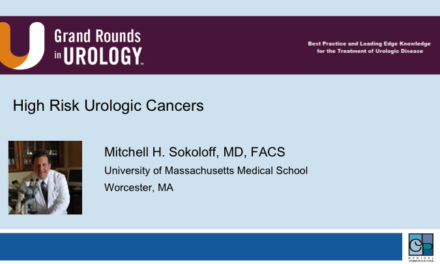Fergus Coakley, MD, presented “Optimizing MRI Targeted Biopsy – Including Endorectal Imaging for Tumor Localization and In-Bore Biopsy for Tissue Diagnosis” during the 7th Global Summit on Precision Diagnosis and Treatment of Prostate Cancer on September 21, 2023.
How to cite: Coakley, Fergus. “Optimizing MRI Targeted Biopsy – Including Endorectal Imaging for Tumor Localization and In-Bore Biopsy for Tissue Diagnosis.” September 21, 2023. Accessed May 2024. https://grandroundsinurology.com/optimizing-mri-targeted-biopsy-including-endorectal-imaging-for-tumor-localization-and-in-bore-biopsy-for-tissue-diagnosis/
Optimizing MRI Targeted Biopsy – Including Endorectal Imaging for Tumor Localization and In-Bore Biopsy for Tissue Diagnosis – Summary
Fergus Coakley, MD, discusses the use of MRI targeted biopsy for tumor localization and in-bore biopsy for tissue diagnosis. He begins by noting the changing paradigm of tumor diagnosis, moving away from the traditional systematic TRUS biopsy after an abnormal PSA or DRE, towards a multiparametric MRI and target-only biopsy after abnormal PSA or DRE. He discusses the benefits of multiparametric MRI over TRUS, addressing the issues of multifocality, overdiagnosis, and underdiagnosis in prostate cancer.
Dr. Coakley then discusses the benefits of including endorectal imaging as part of the multiparametric MRI to avoid underdiagnosis in patients. He presents a few examples of patients with known prostate cancer whose tumors were not visible through outside MRI alone.
Dr. Coakley addresses in-bore versus fusion biopsy for tissue diagnosis. He notes that fusion biopsy does not take into account prostate deformation during the procedure. He then presents evidence that in-bore biopsies are roughly as accurate as off-target fusion biopsies, and concludes that technical and interpretive variability is the biggest challenge facing clinicians in tumor diagnosis today.
The Global Summit on Precision Diagnosis and Treatment of Prostate Cancer is a unique multi-disciplinary forum organized to inform the key health care stakeholders about the emerging advances in clinical case and research and create a consensus-based vision for the future of precision care and educational and research strategy for its realization. The mission of the Summit is to fill the currently existing gap between the key experts of in vivo imaging, the world authorities in the in vitro fluid- and tissue-based molecular diagnostics, including genomics, and thought leaders in the development of novel observation strategies (e.g., active surveillance, or AS) and therapeutic interventions.




